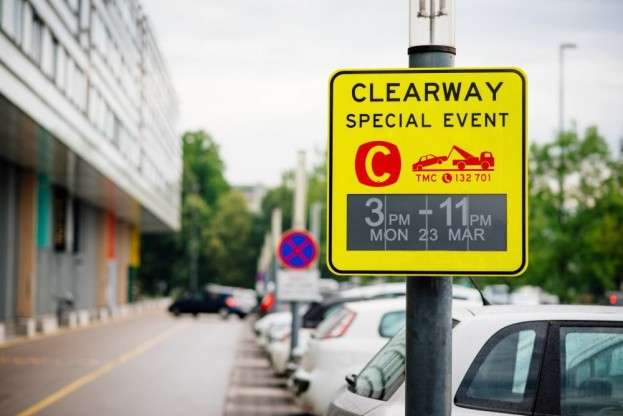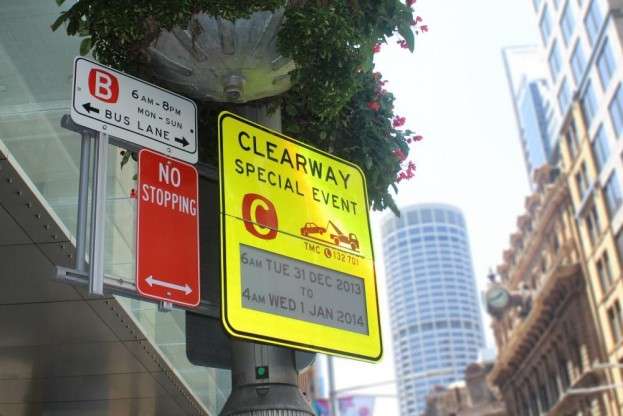July 28, 2015 weblog
Sydney makes its mark with electronic paper traffic signs

Visionect, which is in the business of helping companies build electronic paper display products, announced that Sydney has launched e-paper traffic signs. The traffic signage integrates displays from US manufacturer E Ink and a platform for managing the traffic signs developed by Visionect, according to Visionect's blog earlier this month.
The signs were launched by Australia's Road and Maritime Services.
The big deal: We are accustomed to reading about electronic ink for book readers and wearables like watches; this marks the first time e-ink is being used for traffic signage.
The wireless signs communicate over the cellular network. Advantages: They don't malfunction in the sun's heat or during a power outage.
Visionect provides both hardware and software designed for digital signage indoors and outdoors. Rok Zalar, Visionect's head of product development, said hardware components are managed by server software programmed to 'wake up' the sign for certain prescheduled windows of time when content on the sign is to be changed using 3G technology. Outside of the waking time, the traffic signs use no power.
Simon Sharwood, writing in The Register, provided more details on how the signs work: They are "hitched to a solar panel," he said, "equipped with wireless broadband and updated remotely. When there's an event, RMS staff change the text to reflect arrangements for the imminent event. When there's no event on the horizon, the screens simply go dark."
Besides, running traffic signs of this nature holds forth cost benefits. Visionect pointed to the city of Los Angeles as a case in point. LA, the company said, "puts up 558,000 temporary parking restrictions signs every year to the cost of $9.5 million—a strain on staff and resources that can be reduced by implementing permanent e-paper signs with content easily customizable via cellular networks."

Jamie Condliffe in Gizmodo commented on another plus, flexibility: "The clear advantage, of course, is the flexibility they offer: instead of temporary signage or new signs when rules change, the city can simply send a message to the relevant signs to update and show the correct information. That should make for large civic saving and a better experience for citizens on the sidewalks, too."
Softpedia's Horia Despa said, "Just imagine how easy it would be to change whole signs at different times or when road restoration works take place without any money being spent or staff hurdled in traffic to change signs in rush hours."
An RMS spokesperson told The Register that the new signs were designed to help with event signage. They saw potential in using e-reading technology to show realtime information about "clearways to manage traffic flows during special events."
More information: www.visionect.com/blog/worlds- … epaper-traffic-signs
© 2015 Tech Xplore


















